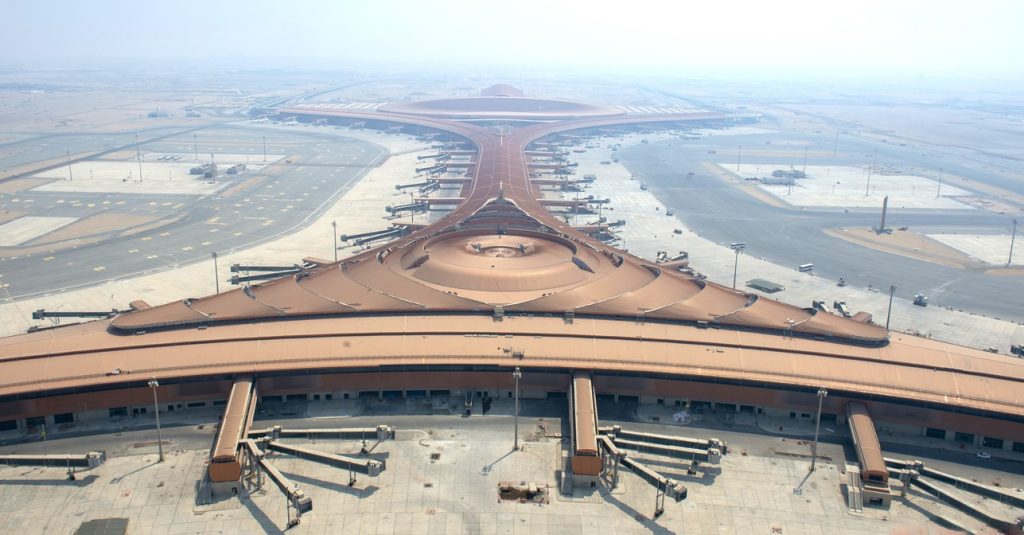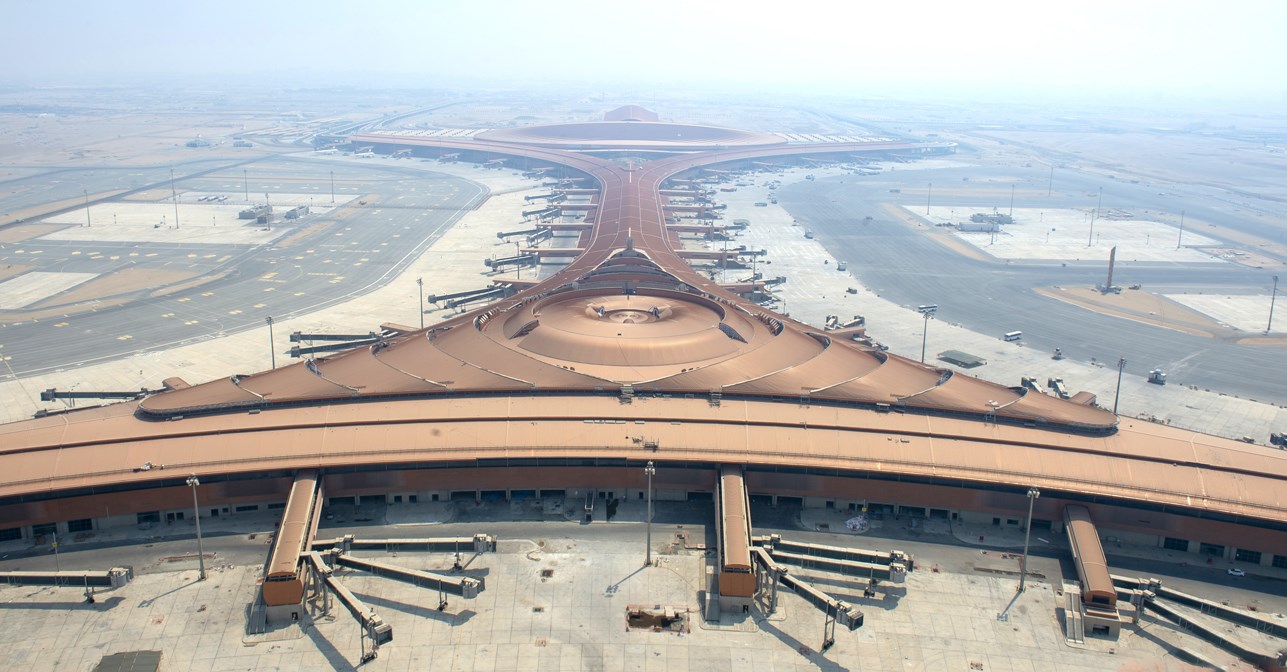
Jeddah Airports Company (Jedco) has announced an ambitious SR115bn ($31bn) expansion plan for King Abdulaziz International Airport (KAIA), aimed at transforming it into one of the largest airports globally. With an expected completion date in 2031, the project aims to increase the airport’s capacity to accommodate a staggering 114 million passengers annually. This significant investment plan encompasses several key components, including the expansion of Terminal 1, the construction of a new Terminal 2, the addition of a fourth runway, development of a new logistics area, and the construction of a Hajj and Umrah terminal. The expansion aims to meet the growing passenger demand in the Mecca and Jeddah region, positioning KAIA as a leading global aviation hub.
Expanding Terminal 1:
Terminal 1, one of the world’s largest passenger terminals, will undergo extensive expansion as part of this visionary plan. The project will involve the installation of new gates, air bridges, and parking aprons, as well as an extension of the automatic people mover and the implementation of new baggage conveyor systems and lounges. Upon completion in 2026, Terminal 1’s capacity will increase by 15 million passengers annually, providing enhanced services for both domestic and international flights.
The Birth of Terminal 2:
The ambitious Terminal 2 project aims to triple the airport’s current capacity of 40 million passengers. Commencing in 2026 and slated for completion by 2031, this project involves constructing an entirely new terminal building equipped with numerous gates, taxiways, aprons, roads, utilities, and state-of-the-art baggage handling and software systems. Estimated to cost over $10 billion, Terminal 2 will be a significant addition to KAIA, reinforcing its status as a major global aviation player.
The Fourth Runway and Infrastructure Relocation:
To accommodate the expected increase in air traffic, Jedco plans to construct a fourth runway, scheduled to begin in 2025 and conclude by 2029. Due to space limitations, significant infrastructure relocation work will be required. This ambitious undertaking demonstrates the commitment to ensuring smooth operations and facilitating the growing passenger demand.
Commercial and Logistics Development:
Recognizing the importance of a thriving commercial ecosystem, Jedco’s expansion plan includes the development of a new logistics area covering over 3 square kilometers. This area will house customs and service buildings, along with leasable warehouses for the private sector. The construction of these facilities will occur in phases, with an ultimate completion date set for 2029. The logistics area will enhance the airport’s commercial proposition and foster economic growth in the region.
Hajj and Umrah Terminal:
Given the significant number of pilgrims traveling through KAIA, Jedco is constructing a new Hajj and Umrah terminal. This dedicated arrivals and departures hall for budget airlines will have a capacity to handle 15 million passengers annually. The project is on track to be completed by 2025, ensuring a seamless experience for pilgrims.
Boosting Passenger Demand:
Jedco’s investment program stems from the forecasted surge in passenger demand, with an expected 114 million passengers by 2030. Saudi Arabian Airlines is projected to account for 51 million passengers, while international airlines, Flynas, and Flyadeal are estimated to contribute 21 million, 13 million, and 12 million passengers, respectively. Jedco’s collaboration with key stakeholders such as Roshn, Uptown Jeddah, SAL, GACA, and Matarat Holding has enabled the development of a comprehensive plan aligned with the region’s growth drivers.
Future Airports in Saudi Arabia:
The expansion at KAIA is part of a broader vision to elevate Saudi Arabia’s aviation sector. Riyadh’s King Salman International Airport, scheduled for completion in 2030, is set to become the world’s largest airport in terms of passenger capacity. Additionally, plans for the Neom International Airport, with a capacity of up to 100 million passengers, and the development of smaller regional airports signify the country’s commitment to enhancing its aviation infrastructure.




